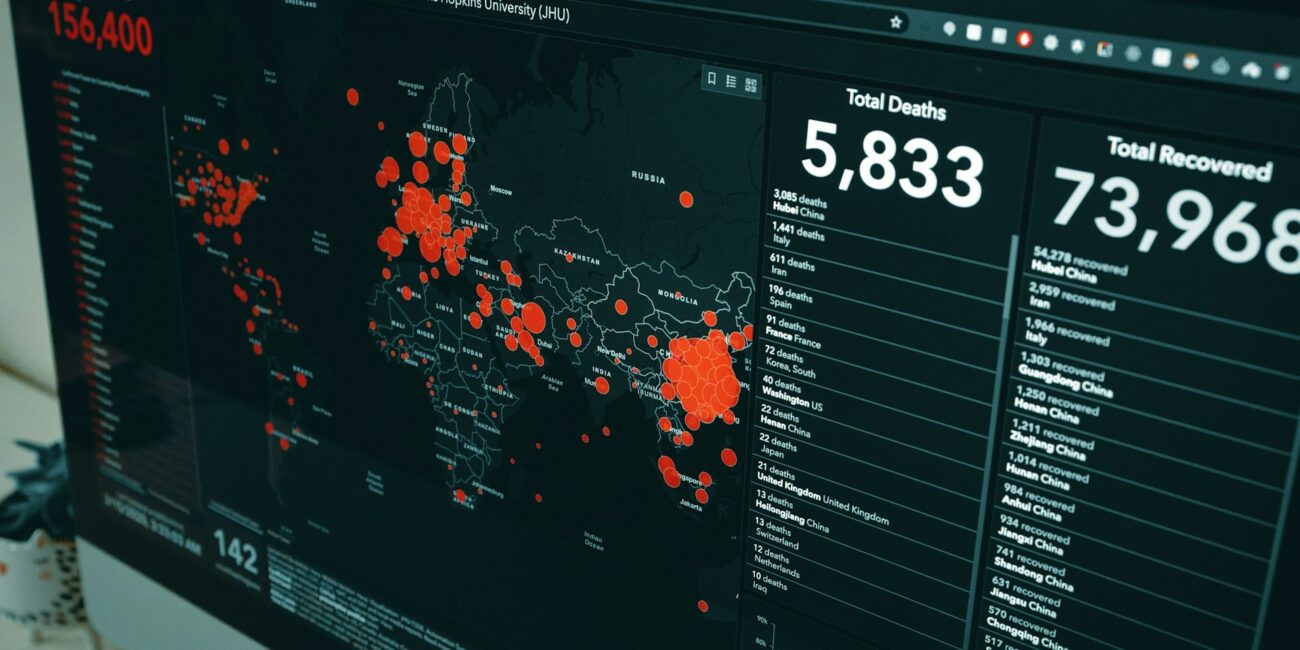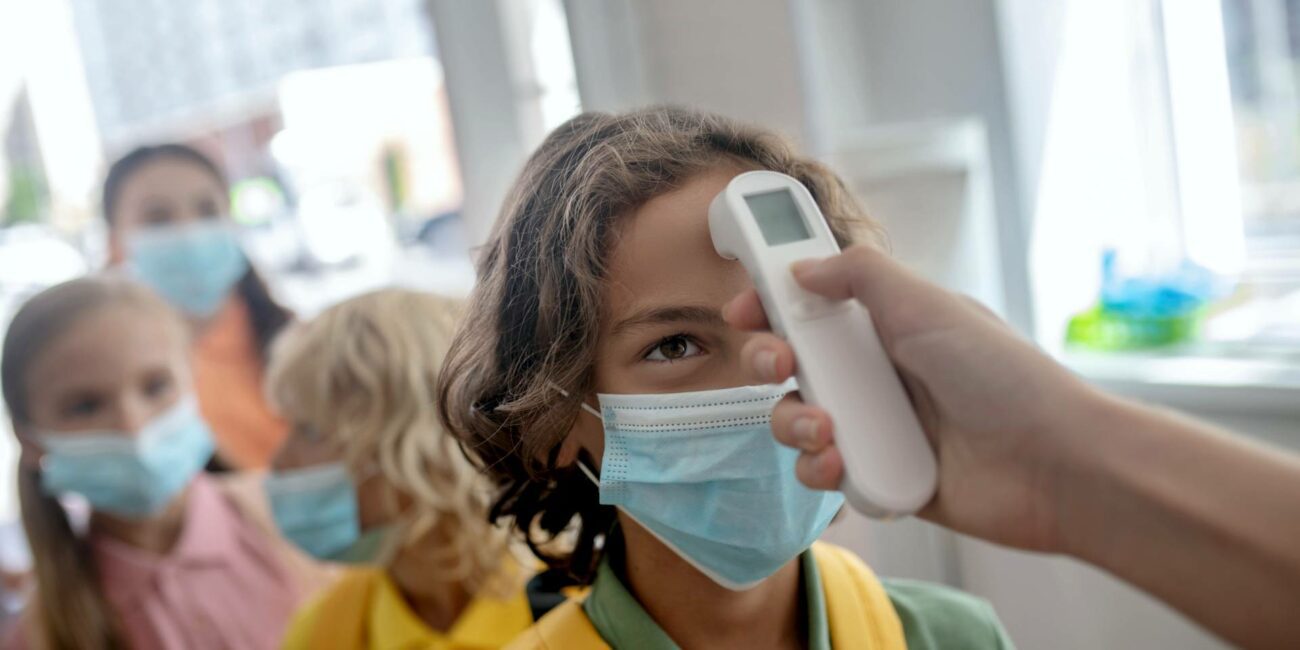Sceptics of the growing ‘pandemic prevention, preparedness and response’ (PPR) agenda celebrated recently, heralding a perceived ‘defeat’ of the World Health Organization’s (WHO) controversial amendments to the International Health Regulations (IHR). Although the proposed amendments would have undoubtedly expanded the WHO’s powers, this focus on the WHO reflects a narrow view of global health and the pandemic industry. The WHO is almost a bit-player in a much larger game of public-private partnerships and financial incentives that are driving the pandemic gravy train forward.
While the WHO works in the spotlight, the pandemic industry has been growing for over a decade and its expansion accelerates unabated. Other major players such as the World Bank, coalitions of wealthy nations at the G7 and G20 and their corporate partners work in a world less subject to transparency; a world where the rules are more relaxed, and a conflict of interest receives less scrutiny.
If the global health community is to preserve public health, it must urgently understand the wider process that is underway and take action to stop it. The pandemic express must be halted by the weight of evidence and basic principles of public health.
Funding a global pandemic bureaucracy
“The FIF could be a cornerstone in the construction of a truly global PPR system in the context of the International Treaty on Pandemic Prevention, Preparedness and Response, sponsored by the World Health Assembly.” (WHO, 19 April 2022)
The world is being told to fear pandemics. Ballooning socio-economic costs of the COVID-19 crisis are touted as justification for increased focus on PPR funding.
Calls for ‘urgent’ collective action to avert the ‘next’ pandemic are predicated on systemic ‘weaknesses’ supposedly exposed by COVID-19. As the WHO steamed ahead with its push for a new pandemic ‘treaty’ during 2021, G20 members agreed to establish a Joint Finance & Health Task Force (JFHTF) to ‘enhance the collaboration and global cooperation on issues relating to pandemic prevention, preparedness and response’.
A World Bank-WHO report prepared for the G20 joint task force estimates that US$ 31.1 billion will be required annually for future PPR, including US $ 10.5 billion per year in new international financing to support perceived funding gaps in low- and middle-income countries (LMICs). Surveillance-related activities comprise almost half of this, with US $4.1 billion in new funding required to address perceived gaps in the system.
In public health terms, the funding proposed to expand the global PPR infrastructure is enormous. By contrast, the WHO’s approved biennium programme budget for 2022-2023 averages US $3.4 billion per year. The Global Fund, the main international funder of malaria, tuberculosis and AIDS – which have a combined annual mortality of over 2.5 million – currently dispenses just US $ 4 billion annually for the three diseases combined. Unlike COVID-19, these diseases cause significant mortality in lower income countries and in younger age groups, year in, year out.
In April 2022, the G20 agreed to establish a new ‘financial intermediary fund’ (FIF) housed at the World Bank, to address the US $10.5 billion PPR financing gap. The FIF is intended to build upon existing pandemic funding to ‘strengthen health systems and PPR capacities in low-income and middle-income countries and regions’. The WHO is predicted to be the technical lead, landing them with an assured role irrespective of the outcome of current ‘treaty’ discussions.
The establishment of the fund has proceeded with breathtaking speed, and it was approved on June 30 by the World Bank Board of Executive Directors. A short period of consultation precedes an expected launch in September 2022. To date, donations totalling US $1.3 billion dollars have been pledged by governments, the European Commission and various private and non-government interests, including the Bill and Melinda Gates Foundation, Rockefeller Foundation, and the Wellcome Trust. The initial areas for the fund are somewhat all-encompassing, including country-level ‘disease surveillance; laboratory systems; emergency communication, coordination and management; critical health workforce capacities; and community engagement’.
In scope, the fund has the appearance of a new ‘World Health Organization’ for pandemics – to add to the existing (and ever-expanding) network of global health organisations such as the WHO; Gavi; the Coalition for Epidemic Preparedness Innovations (CEPI); and the Global Fund. But is this increased expenditure on PPR justified? Are the escalating socio-economic costs of COVID-19 due to a failure to act by the global health community, as is widely claimed; or are they due to negligent acts of failure by the WHO and global governments, when they discarded previous evidenced-based pandemic guidelines?
COVID-19: failure to act or acts of failure?
In the debate surrounding the growing pandemic industry, much attention is being directed towards the central role of the WHO. This attention is understandable given the WHO’s position as the agency responsible for global public health and its push for a new international pandemic agreement.
However, the WHO’s handling of the response to COVID-19 creates serious doubts about the competency of its leadership and raises questions about whose needs the organisation is serving.
The WHO’s failure to follow its own pre-existing pandemic guidelines by supporting lockdowns, mass-testing, border closures and the multi-billion-dollar COVAX mass-vaccination program, has generated vast revenue for vaccine manufacturers and the biotech industry, whose corporations and investors are major contributors to the WHO. This approach has crippled economies, damaged existing health programs and further entrenched poverty in low-income countries. Decades of progress in children’s health are likely to be undone, together with the destruction of the long-term prospects of tens of millions of children, through loss of education, forced child marriage and malnutrition. In abandoning its principles of equality and community-driven healthcare, the WHO appears to have become a mere pawn in the PPR game, beholden to those with the real power; the entities who are providing its income and who control the resources now being directed to this area.
Corporatizing global public health
Recently established health agencies devoted to vaccination and pandemics, such as Gavi and CEPI, appear to have been highly influential from the beginning. CEPI, is the brainchild of Bill Gates, Jeremy Farrar (director of the Wellcome Trust), and others at the pro-lockdown World Economic Forum. Launched at Davos in 2017, CEPI was created to help drive the market for epidemic vaccines. It is no secret that Bill Gates has major private financial ties to the pharmaceutical industry, in addition to those of his foundation. This clearly places a question mark over the philanthropic nature of his investments.
CEPI appears to be a forerunner of what the WHO is increasingly becoming – an instrument where individuals and corporations can exert influence and improve returns by hijacking key areas of public health. CEPI’s business model, which involves taxpayers taking most of the financial risk for vaccine research and development whilst big pharma gets all the profits, is notably replicated in the World Bank-WHO report.
Gavi, itself a significant WHO donor that exists solely to increase access to vaccination, is also under direct influence of Bill Gates, via the Bill and Melinda Gate Foundation. Gavi’s involvement (alongside CEPI) with the WHO’s COVAX program, which diverted vast resources into COVID-19 mass-vaccination in countries where COVID-19 is a relatively small disease burden, suggests the organisation is tied more strongly to vaccine sales than genuine public health outcomes.
Pandemic funding – ignoring the big picture?
At first glance, increased PPR funding to LMICs may seem a public good. The World Bank-WHO report claims that ‘the frequency and impact of pandemic-prone pathogens are increasing.’ However, this is belied by reality, as the WHO lists only 5 ‘pandemics’ in the past 120 years, with the highest mortality occurring in the 1918-19 H1N1 (‘Spanish’) influenza pandemic, before antibiotics and modern medicine. Apart from COVID-19, the ‘Swine Flu’ outbreak in 2009-10, which killed less people than a normal flu year, is the only ‘pandemic’ in the past 50 years.
Such a myopic focus on pandemic risk will do little to address the most serious causes of illness and death, and it can be expected to make matters worse for people experiencing the most extreme forms of socio-economic disadvantage.
Governments of low-income countries will be ‘incentivised’ to divert resources to PPR related programs, further increasing the growing debt crisis. A more centralised, top-down public health system will lack the flexibility to meet local and regional needs. Transferring support from higher burden diseases, and drivers of economic growth, has a direct impact on mortality in these countries, particularly for children.
The WHO-World Bank report states that the pillars of the global PPR architecture must be built on the ‘foundational principles of equity, inclusion and solidarity’. As severe pandemics occur less than once per generation, increased spending on PPR in LMICs clearly violates these basic principles as it diverts scarce resources away from areas of regional need, to address the perceived health priorities of wealthier populations. As demonstrated by the damage caused by the COVID-19 response, in both high and low-income countries, the overall harm of resource diversion from areas of greater need is likely to be universal. In failing to address such ‘opportunity costs’, recommendations by the WHO, the World Bank, and other PPR partners cannot be validly based in public health; nor are they a basis for overall societal benefit. .
One thing is certain. Those who will gain from this expanding pandemic gravy train will be those who gained from the response to COVID-19.
The pandemic gravy train – following the money
The new World Bank fund risks compounding existing problems in the global public health system and further compromising the WHO’s autonomy; although it is stated that the WHO will have a central ‘strategic role’, funds will be channelled through the World Bank. In essence, it financially side-steps the accountability measures at the WHO, where questions of relative worth can be raised more easily.
The proposed structure of the FIF will pave the way for organisations with strong ties to pharmaceutical and other biotech industries, such as CEPI and Gavi, to gain even greater influence over global PPR, particularly if they are appointed ‘implementing entities’ – the operational arms that will carry out the FIF’s work program at country, regional and global level.
Although the initial implementing entities for the FIF will be UN agencies, multilateral development banks and the IMF, plans are already underway to accredit these other international health entities. Investments are likely to be heavily skewed towards biotechnological solutions, such as disease surveillance and vaccine development, at the cost of other, more pressing, public health interventions.
Protecting public health rather than private wealth
If the world truly wants to address the systemic weakness exposed by COVID-19, it must first understand that this pandemic gravy train is not new; the foundations for the destruction of community- and country-based global public health began long before COVID-19.
It is unarguable that COVID-19 has proved to be a lucrative cash cow for vaccine manufacturers and the biotech industry. The public-private partnership model that now dominates global health enabled vast resources to be channelled into the pockets of corporate giants, through programs they directly influence, or even run. CEPI’s ‘100 days Mission’ to make ‘safe and effective’ vaccines against ‘viral threats’ within 100 days – to ‘give the world a fighting chance of containing a future outbreak before it spreads to become a global pandemic’ – is a permit for pharmaceutical companies to appropriate public money on an unprecedented scale, based on their own assessments of risk.
The self-fulfilment of the ‘increasing frequency of pandemic’ prophecy will be ensured by the push for increased disease surveillance – a priority area for the FIF. To quote the World Bank-WHO report:
“COVID-19 highlighted the need to connect surveillance and alert systems into a regional and global network to detect zoonotic transmission events, raise the alarm early to enable a swift public health response, and accelerate the development of medical countermeasures.”
Like many claims being made about COVID-19, this claim has no evidence base – the origins of COVID-19 remain highly controversial and the WHO’s data demonstrate that pandemics are uncommon, whatever their origin. None of the ‘countermeasures’ have been shown to significantly reduce the spread of COVID-19, which is now globally endemic.
Increased surveillance will naturally identify more ‘potentially dangerous pathogens’, as variants of viruses arise constantly in nature. Consequently, the world faces a never-ending game of seek and ye shall find, with never-ending profits for industry. Formerly once per generation, this industry will make ‘pandemics’ a routine part of life, where rapid fire vaccines are mandated for every new disease or variant that arrives.
Ultimately, this new pandemic fund will help to hook low- and middle-income countries into the growing global pandemic bureaucracy. Greater centralisation of public health will do little to address the genuine health needs of people in these countries. If the pandemic gravy train is allowed to keep growing, the poor will get poorer, and people will die in increasing numbers from more prevalent, preventable diseases. The rich will continue to profit, while fuelling the main driver of ill-health in lower income countries – poverty.
David is a clinical and public health physician with a PhD in population health and background in internal medicine, modelling and epidemiology of infectious disease. Previously, he was Director of the Global Health Technologies at Intellectual Ventures Global Good Fund in the USA, Programme Head for Malaria and Acute Febrile Disease at FIND in Geneva, and coordinating malaria diagnostics strategy with the World Health Organization.
Emma McArthur




